Rapid Prototyping Curved Mirrors
03 Jul 2021Sometimes one may require a non-planar mirror. Usually you can do that by turning and polishing a chunk of metal on a lathe until it is so smooth that the metal works like a mirror. Or you can achieve a mirror surface by grinding a piece of glass or coating plastic in a vacuum chamber. All of that is pretty slow and expensive.
But is there maybe an easier or faster way at the cost of a bit of precision? (yes)
In general there are three different types of shapes:
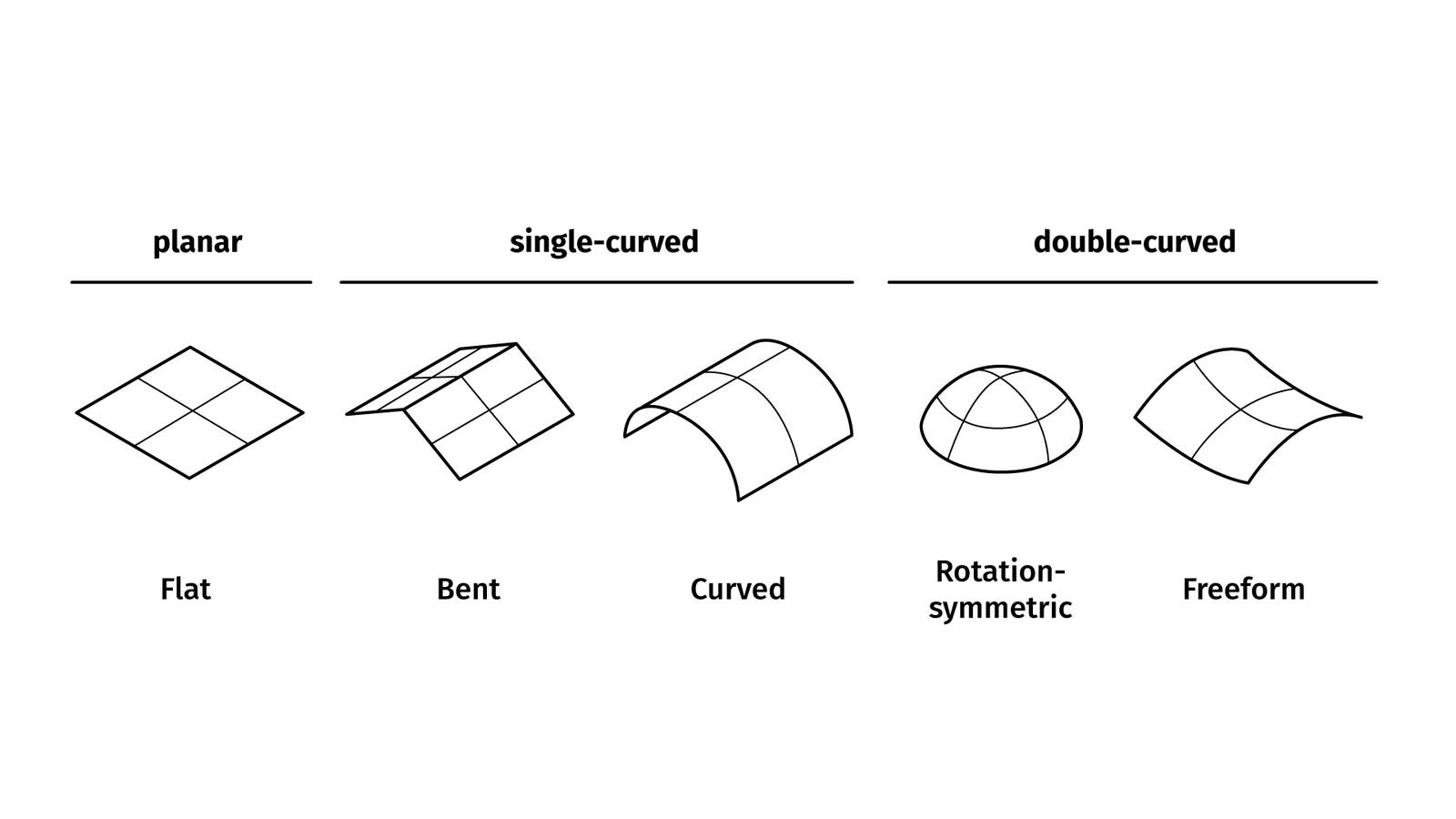
The material I use is laminated and metallized polystyrene. Since there is already a mirror surface on the material we don’t need to coat it as a second step. And as a thermoplastic is easily deformable and at room temperature pretty stiff so it keeps its shape.
Before I settled on Polystyrene I did a quick test of different mirror-like materials:
- Coated acrylic glass
- Metallized polystyrene
- PVC foil with an aluminium layer
- and Rustoleum Mirror Spray on a PETG sheet
Comparing this works pretty easy by bouncing light against different mirror materials onto a sheet of paper. My reference material is a silver-coated glass mirror, which is pretty standard stuff and the highest quality mirror you’ll find in your household.
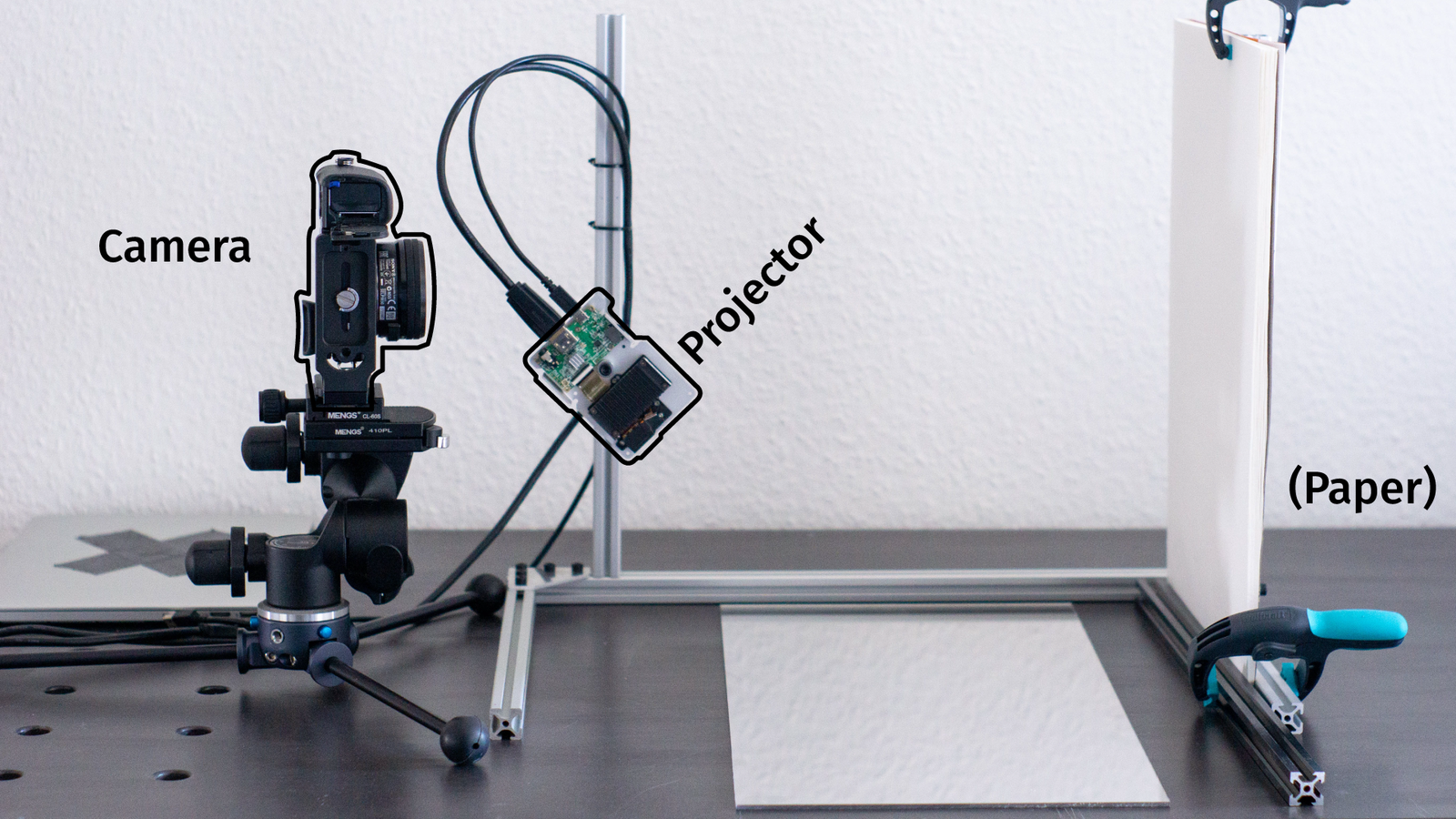
The reflection of the projected test pattern is already looking pretty good.
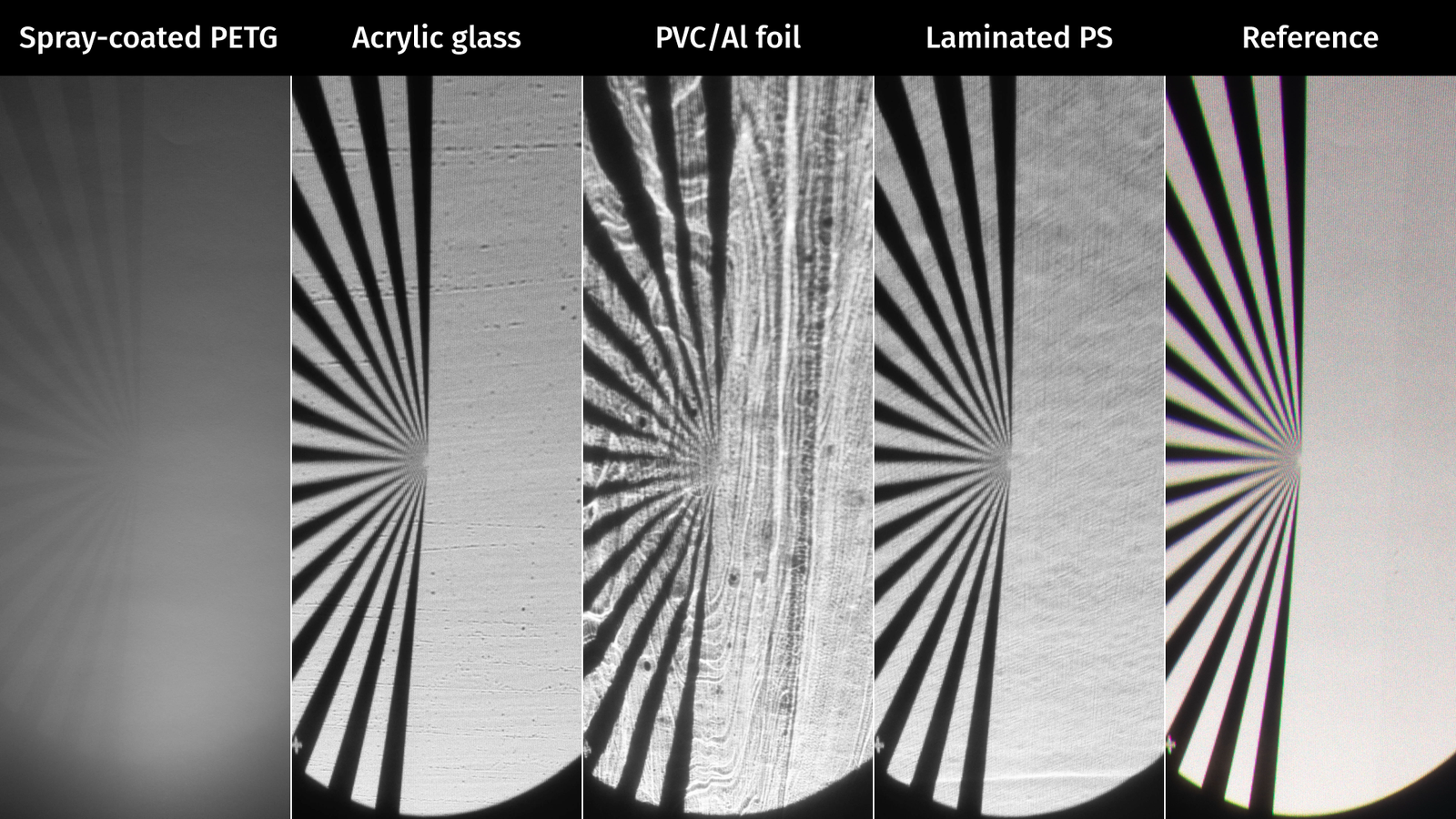
But if we subtract the image from the reference mirror, we just see the differences, so all the tiny imperfections and errors.
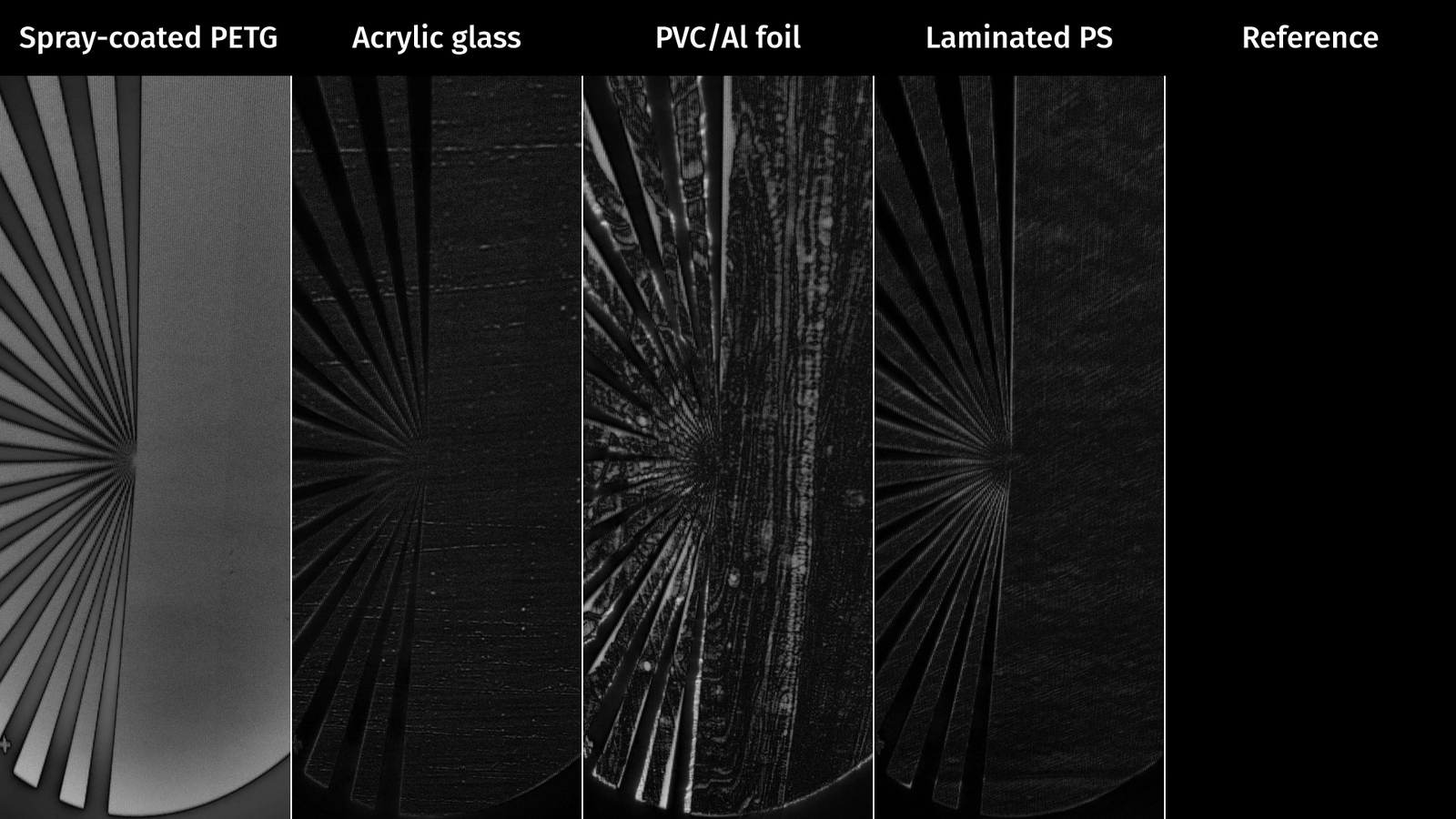
We can see that acrylic glass looks quite ok, but has a few tears or cracks in the reflection surface. Laminated polystyrene causes a bit of color banding and has some issues, but these are well distributed among the whole surface and not as local as acrylic PVC foil is just straight-up garbage and the mirror spray even worse.
So, we’ve got a winner. The laminated polystyrene is something you can usually get this at a half millimeter or 1 millimeter thickness pretty much everywhere around the world. Sometimes in small arts and crafts shops, sometimes online. One valid alternative is vinyl which may be easier to get in some countries. If you go thinner your mirror gets imprecise, if you go thicker you will have a hard time deforming the material.
So, back to the mirror: You can model that in any CAD program and just pretend you are doing metal sheet bending with a 1mm thick material. When you’ve got your desired geometry, you can just export the drawing or generate CNC tool paths from the contours (that’s what I did).
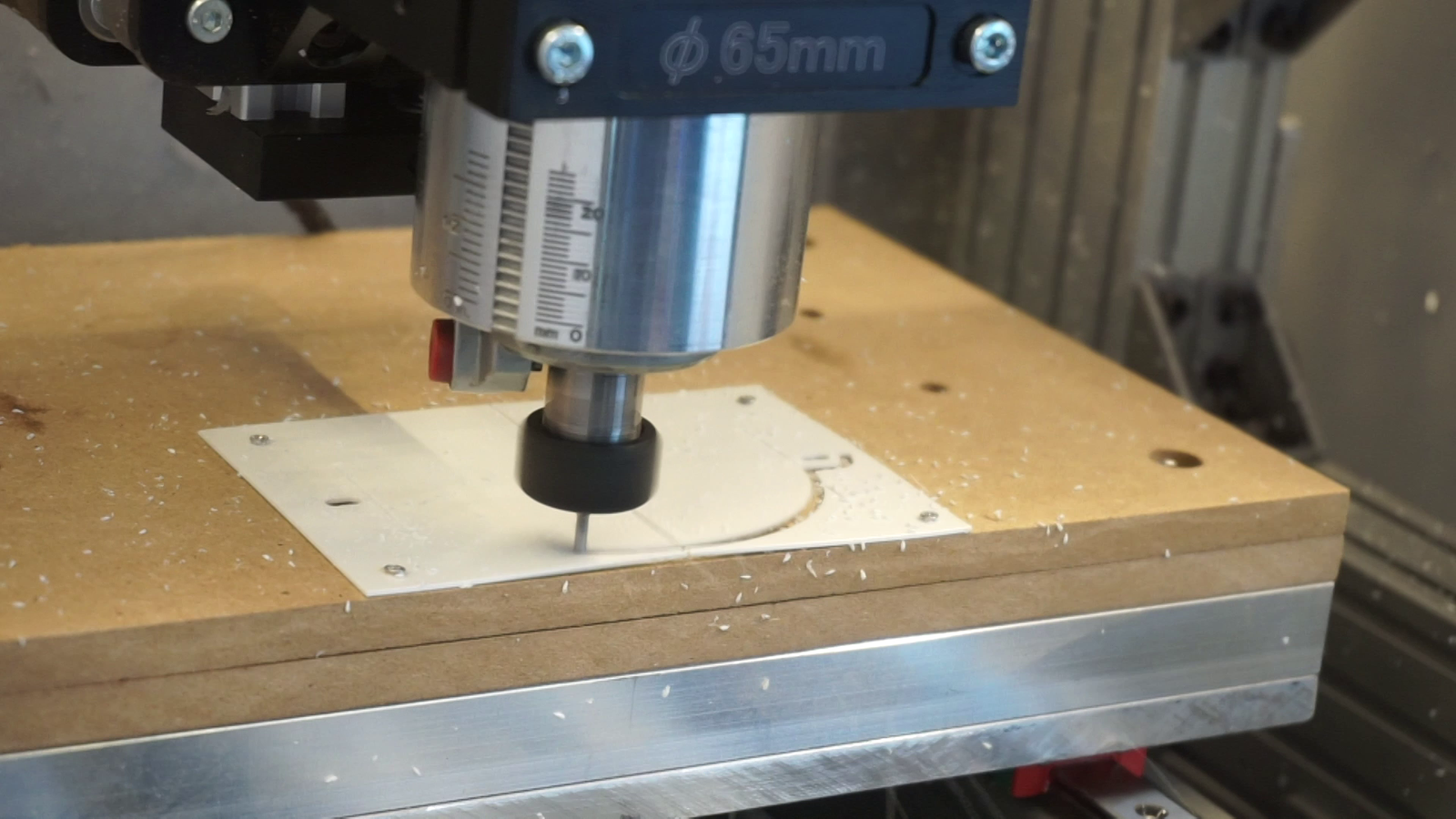
With a simple CNC milling operation, I carve and cut the part from the polystyrene sheet. I can spare myself a lot of frustration by using a 90-degree chamfering endmill to pre-carve the bending lines. Less hassle, more precision. If you don’t have a CNC handy, print the drawing on a sheet of paper and cut it manually with a hobby knife. Works totally okay, but is slightly less cool, of course.
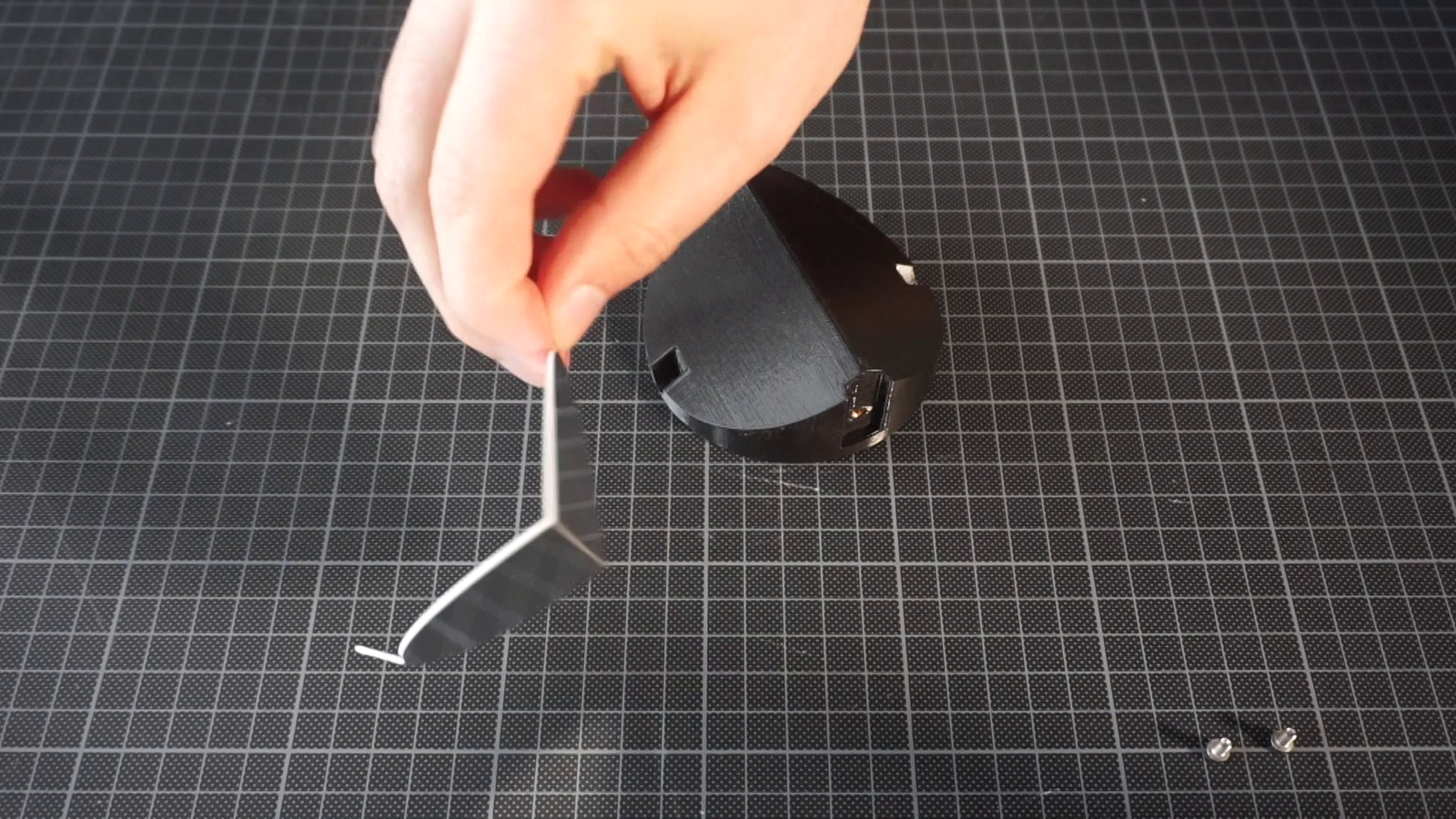
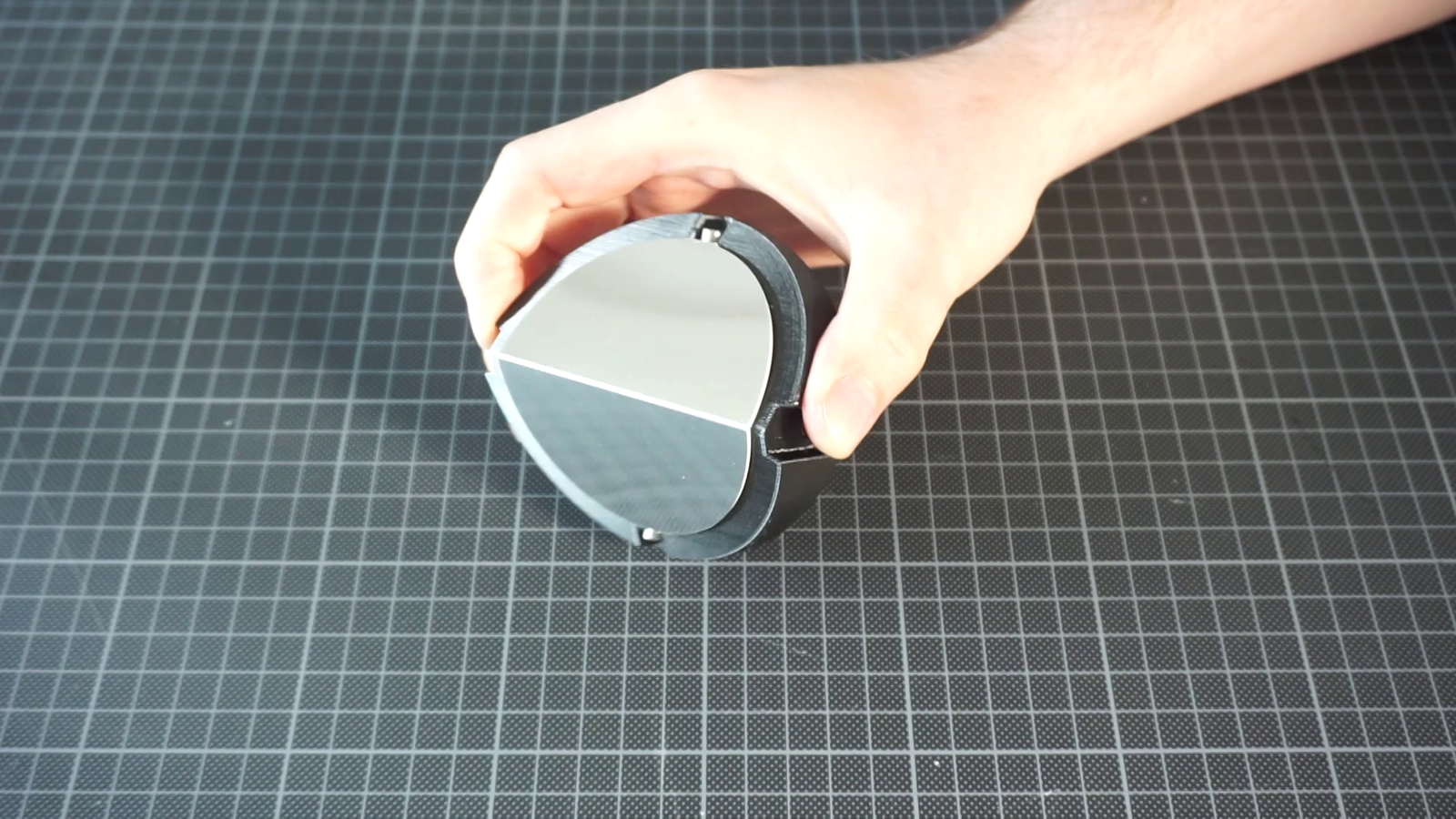
So, back to our mirror shapes. How can we make double-curved surfaces? First, we need to model something again and offset the surface by the thickness of the metallized plastic sheet. Then we can 3d-print the offsetted model as a mold for vacuum forming.
For vacuum forming you just need a few basic tools:
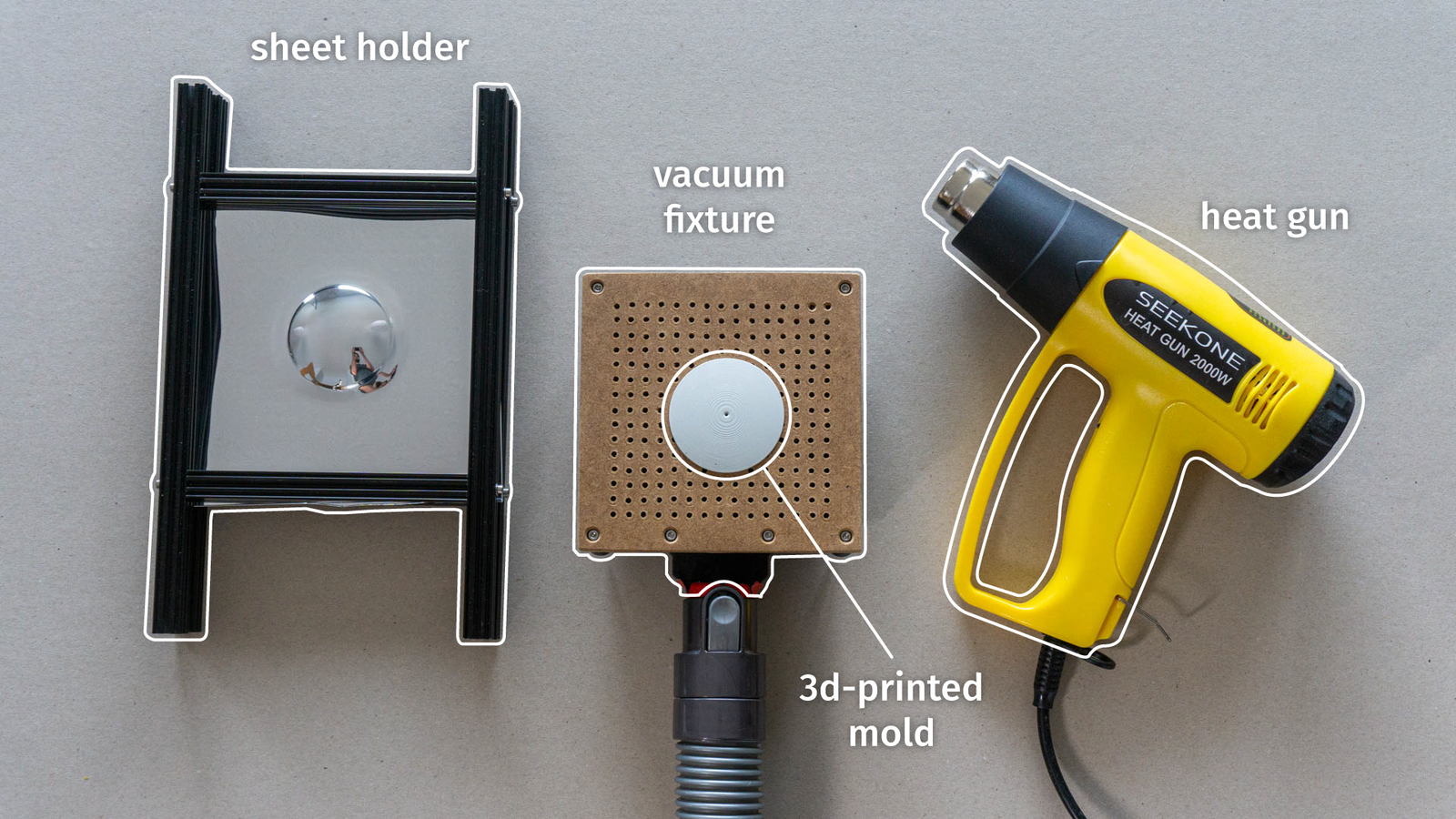
I am using slightly undersized screw holes in the mold, so I can drill a small hole in the mirror after vacuum forming to fit a screw and permanently fix the mirror to the plastic. Glue would probably do the job as well, but the screw holes make it easier for air to escape as well, so the vacuum forming is a bit easier.

Then we just need to heat up the sheet of polystyrene, press it on the mold, turn on the vacuum and wait a few seconds till it’s hard again. Cut away the excess plastic and permanently bond the polystyrene to the mold.
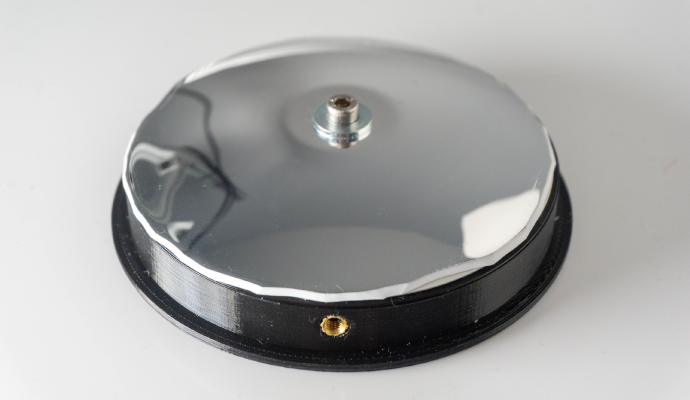
The resulting mirror is quite okay when it comes to precision, pretty good in terms of reflection, and extremely good concerning manufacturing time and price.
A few caveats:
Do not use PLA! PETG works okayish with a few extra perimeters and anything that’s more heat tolerant works even better. In any case: If your plastic sheet transfers too much heat into the printed mold, it’s game over so do not overheat the sheet.
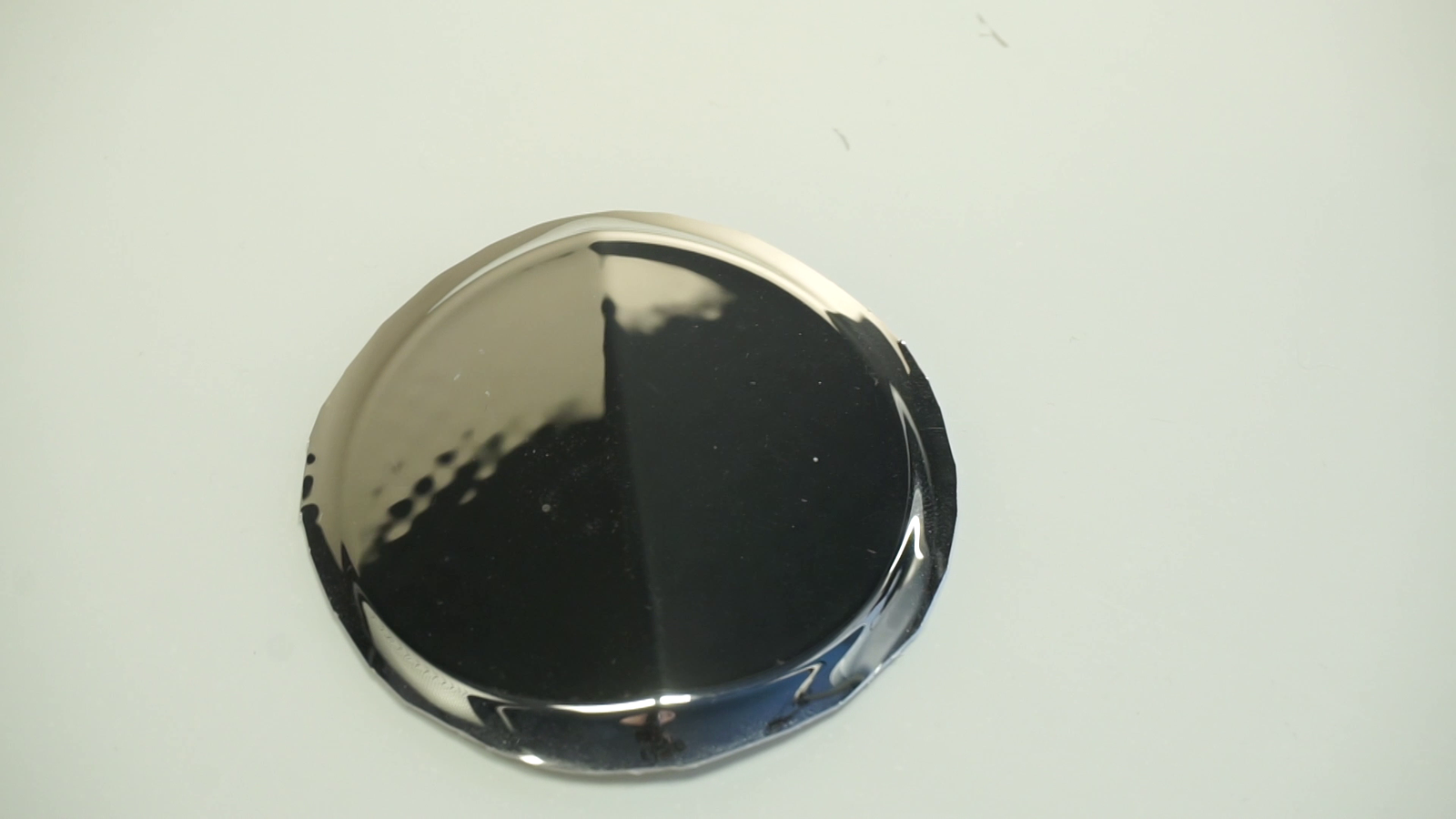
The metallized polystyrene can handle a bit of stretch but at some point it will rip. In most cases that’s probably not an issue.
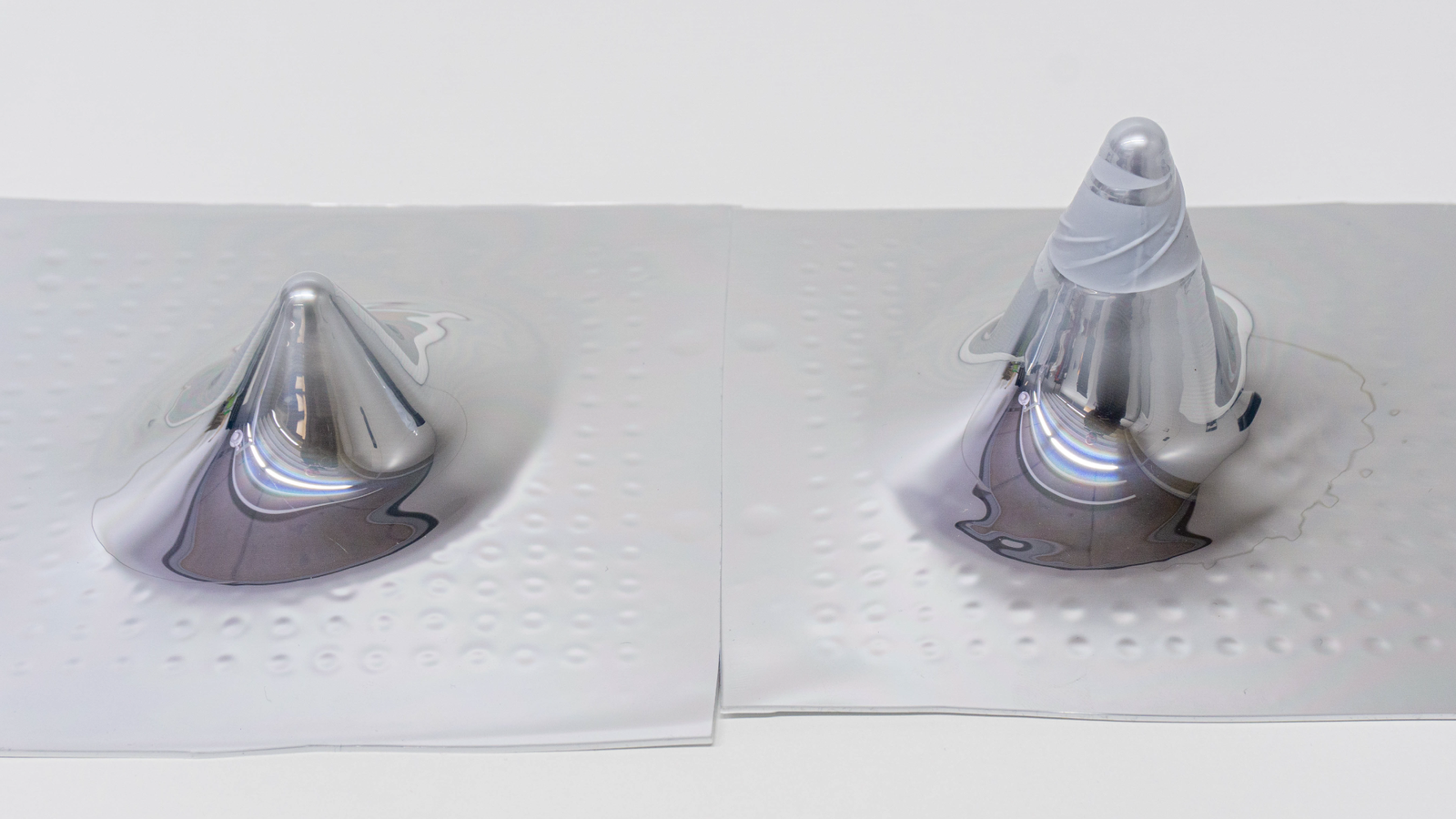
Other videos which might be interesting:
Smoothing 3d-printed parts with resin and coat them chemically with silver.
A bit of theory and a lot of making mirors with glass blanks.